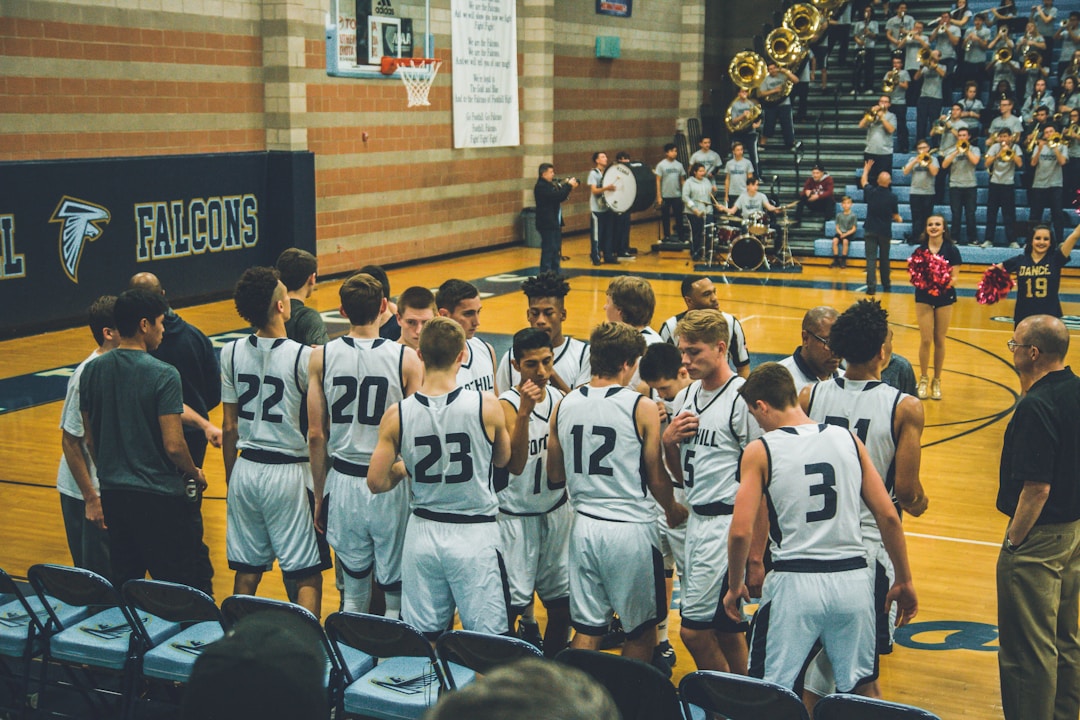Introduction
Workshops are one of the primary forms of socialising project agenda, agree on topics, manage discussions. But how do you run a Perfect Workshop? Oxford defines this as “a meeting at which a group of people engage in intensive discussion and activity on a particular subject or project.” There are many different ways of how workshops can be planned and organised, often with multiple methodologies. Each professional will know that planning a useful workshop takes organisation, focus, and much creativity to ensure its objectives are reached.
Over the years, I have collected several tools that I will slowly post through this blog. This post kind of sets the scenes, giving some tips based on my experience on what to do and what to expect.
- Why a Workshop?
- Before the Workshop
- 1. Define the Goals for a Perfect Workshop
- 2. Decide Who Will Attend
- 3. Choose the Right Location
- 4. Think about Technology
- 5. Create an Agenda
- 6. Develop a Follow-up Plan
- During the Workshop
- 1. Starting the meeting
- 2. Time Keeping
- 3. Manage the Objective
- 4. Ensure the Conclusions are Captured
- 5. Closure and Debrief of the Perfect Workshop
- After the Workshop
- The Toolkit for the Perfect Workshop
- Comments and Feedbacks
- More posts like this
Why a Workshop?
Workshops are today a standard way to build interactions with stakeholder, often used as part of Change Management Processes, Organisation Design, Culture Change, Employee Experience virtually any HR domain. They are a crucial part of Design Thinking and Agile Methodologies. Successful workshops imply the usage all of the competencies we have identified for the Future of Work: Listening, Curiosity, Authenticity, Learning Agility, Decision Making.
But are workshop always needed? From my experience no. In too many cases these are used as a proxy for poor decision making (so that the decision responsibility gets shared), or as a reward for the team (“let’s do an offsite in a nice location”), or to increase the bill of an external consultant, or simply because we don’t know what the problem is.
Then, people of all backgrounds are thrown into “facilitating a workshop” without necessarily the right preparation or experience.
All this all together has created an “allergy” for many people to workshop and similar activities, resulting in the fact that a lot more effort is required to build a Perfect Workshop.
So, first thing first. Start with the question Do we really need a workshop?
Before the Workshop
Much of a workshop success will depend actually from its planning phase. In my experience, people tend to dislike workshops that are not carefully planned. Moreover, also, the participants’ selection is a critical step that requires attention and dedication.
1. Define the Goals for a Perfect Workshop
Every Workshop must have a goal. And it needs to be easily communicated to all participants ahead of the Workshop itself. Although it might be simple to do, there are many cases when Workshops fail because of poorly defined goals, which results in discussions wandering around separate streams.
There are moments (particularly when large change programs are starting) where not everything is clear. Well, also, in this case, it’s essential to make sure that we are transparent with the participants.
Remember: without this clear goal, there’s no point in getting people together. It’s just a waste of time.
2. Decide Who Will Attend
With the objective in mind, it’s time to select the attendees. Remember that a Perfect Workshop is not a lesson: you expect people to be actively involved in the discussion. This means that you want to have participants that are able and willing to contribute with content and ideas directly related to the workshop goal. Remember that a facilitated discussion is only useful with groups of 8 to 12 people, rarely more. Larger groups will need to divide into subgroups, with additional facilitators and more coordinating work.
Engage with your stakeholders and start making a list. Always take the time to review this a couple of time, and leave flexibility to add a few people till the last moment. Make sure you don’t fall into one of the following traps:
- participants that get invited only for their organisational level
- participants that get invited only because “they might feel left out”.
Depending on the culture of the team, you will have to make some concessions, but the above will often lead to getting too many participants and will hinder the workshop quality.
3. Choose the Right Location
Depending on the number of participants, it is essential to choose a proper location. I think each of you has experimented those dreadful meeting rooms underground, without windows and natural light. Try to ensure the overall environment is pleasant: you want to get collaboration at work, not create an intimidating atmosphere.
Think about all the logistics and practical details in time. Will people see the screen? Are there enough flipcharts? If you need audio, does the location support it? Are there appropriate facilities for breakout sessions? How do you reach the venue? Is catering needed? What tools will the participant need?
4. Think about Technology
Technology is now a big part of most interactions within company settings. Too many facilitators, however, fail to recognise the impact these technologies have in the management of a Workshop. For example, in many short workshops (those lasting less than 2 hours), you need to be very focused. So, do you need a PowerPoint presentation? Or other Visual Aid?
Another common element is remote participants. In this case, the entire management of the Workshop needs to consider the people that are not in the room.
Be sure to consider all of these elements in the design of your Perfect Workshop.
5. Create an Agenda
Now that you know your primary objective, who will attend, the location and the technology requires, you can start developing the content outline on how to achieve the Perfect Workshop’s goals.
- Main points – Create a list of main points to discuss, and then break down each more significant point into details that you want to communicate to your audience. Using a MindMapping tool is for me, the most efficient way of doing this.
- Visual aids – List the visual aids (Slides, Images, Videos, Charts, etc.), if any, you’ll use for each point.
- Discussions and activities – Take time to list accurately which group discussions and activities you’ll have at which point in the Workshop. How much time will you allow for each exercise? Make sure your activities are appropriate for the size of the group and ensure that your venue has the resources (for example, breakout rooms) needed to run sessions.
The more detailed your plan, the more you’ll ensure that your Workshop will run to schedule – and be successful.
For workshops that are particularly complex, or that involve multiple facilitators, it’s a good habit to prepare a detailed Storyboard of the entire session, ensuring the touchpoints between facilitators are also mapped.
You don’t have to share the entire storyboard or detailed plan with the participants, but it is a good habit to share the high-level agenda (with your key points) with the audience ahead of the event.
6. Develop a Follow-up Plan
The most significant aspect of failure for workshops is often the Follow-Up. That’s why it is essential to think and plan of it ahead of the Workshop itself. Too many facilitators think of the follow-up only in terms of workshop evaluation (thus sending out an evaluation questionnaire afterwards). But this is not sufficient. The people that have contributed to the workshop success want to know how their shared knowledge will be used, and how their time was “effective”. People need to know that their hard work resulted in a decision or action, so keep them informed about what’s happening after the Workshop has ended.
In the case of a short Brainstorming session, maybe a thank you email with an action plan is enough. For a large two days workshop, you need to keep the team involved a lot more.
During the Workshop
You know have a substantial objective and a detailed plan. How will you now get the participants involved so that the Workshop does not transform itself into a one-way conference?
Getting everyone involved is key to a successful workshop. If you stand up and talk for three hours, you’re just giving a lecture – not facilitating a workshop. Everyone needs to participate.
It’s not just about making it fun. It’s about making it useful for the participants. You are asking them for ideas, information, knowledge. You are asking them to go beyond what their regular job is. This doesn’t just happen by chance. It needs to be correctly built in the workshop design and its facilitation.
Creating group exercises and interaction moment is different for each Workshop. Keep these tips in mind:
- Most people are nervous about speaking in public and/or in an unfamiliar group. Creating psychological safety for everybody is the starting point for the success of any group interaction. Controlling the size of the group is the first step in this, together with the group composition.
- Mix up different people in each group. When you are composing a participant list, try to understand the style of each, and try to mix the teams by departments, jobs, personality style, etc. Often you will realise some of the differences only during the Workshop: make sure you take mental notes and adapt the groups as you see fit.
- Plan from the beginning how you’ll record the ideas from each group activity (and subgroup if relevant). It’s a good practice to select a note keeper, somebody that can write down the key ideas. Often it is difficult to manage the discussion while also selecting what to write down. You just need to ensure you’re not excluding the note-keeper from the discussion.
- If you have different subgroups, make sure you have time for them to share their findings with the broader community. There are many ways to do this efficiently, but it is crucial to plan this accurately, as this often becomes a big derailer.
- Make sure you spend time in “managing” the crowd. Each Workshop will almost immediately highlight some dominant personality that tends to talk a lot and some more reserved people that avoid taking the floor. Be sure you actively manage this. Nudging is often enough as a technique.
Fun, Irony, Involvement are your tools to create an exciting experience for all the participants. This will help keep everyone interested and participating, and ultimately will make you reach your goal easier.
1. Starting the meeting
Start the meeting with a few icebreakers questions or exercises. This will help everyone to get relaxed and comfortable.
Then share the agenda, and give the basic rules for the Workshop itself. If the topic is sensitive, everyone needs to understand how the content discussed will be used. Different tools can help to frame the correct set of rules.
It is essential to manage the Rules of Engagement. How many times did you start a workshop just to see everyone pull their laptops and start emailing? Be intentional (I always plugin in my agendas “email time”) and set the correct rules from the beginning. Also, make sure you cover any logistics (as needed), particularly if someone will not be attending the Workshop in its entirety.
2. Time Keeping
The most challenging part of running a successful workshop is timekeeping. Timeboxing each activity is always relevant, and you need to ensure that everybody understands from the beginning the quantity of time that is allocated to each event. Building some slack on the agenda can help; however, remember: breaks are vital for the participants’ mental fitness. You should not just skip a break because one session lasted too long.
It’s particularly important to manage derailers. These can be topics the bring the discussion off-track. A Parking Lot can be an excellent tool to achieve these. Sometime you might have a participant that becomes a derailer. This type of participant can take multiple forms (from the person that keeps interrupting the discussion with unrelated questions, to the one that simply keeps talking on the phone). Make sure you manage this immediately, as it can compromise the entire workshop success.
The biggest challenge, however, happens when a fascinating, totally on topic, discussion, unfolds for a time that is too long. If this occurs towards the end of the meeting, you can negotiate with the audience a small prolongation (if logistically feasible). Or you can restructure the rest of the Workshop to ensure you are capturing the value of the discussion. Just be transparent, make sure everybody understands this is an exception, and that you are still in control.
3. Manage the Objective
Often the discussion will simply go in a direction that is not consistent with the objective of the meeting. Also, here, transparency is vital. There’s nothing wrong in closing a workshop early if you realise it’s impossible to reach the goal. It will show your determination as a facilitator towards the goal itself.
4. Ensure the Conclusions are Captured
Any successful workshop will have to lead to at least one decision at the end. If it doesn’t, then it was not structured correctly. Sometimes this decision can be just an agreement on one fact, on one definition of an issue, or even to hold a second workshop. But there needs to be one.
Which is why it is vital to ensure there is enough time to capture the decision, ensure that everybody agrees to it (if relevant, ensuring that differing opinions are well noted) and that the appropriate follow-up actions are shared.
If the objective of the Workshop includes decisions on any topic, the appropriate Group Decision Making Technique should be used.
5. Closure and Debrief of the Perfect Workshop
Too often, we skip the last essential part of the Perfect Workshop: its closure. Just because we reached the goal and achieved consensus on an issue definition, does not mean we can close the Workshop abruptly and simply “go home”. It is in this phase the in many cases you leave the Mark that will make the difference between just another workshop and memorable experience.
The goal of this session is to close the experience, while at the same time evaluating the Workshop itself. There are multiple techniques to manage closure. For example, if you collected attendees’ expectation during the opening, you can check if these have been matched or not. You can close by summarising the key messages of the day. Or sometimes, just giving one last piece of content useful for the audience.
In any case, make sure you plan this part appropriately.
After the Workshop
I’ve mentioned already that you need to plan this part already from the beginning, in order to achieve a Perfect Workshop. The Workshop itself will generally provide you with the content for the follow-up (although often you will also get some ideas about the follow-up process).
Make sure you manage three layers of follow-up needs:
- Organisation: follow-up on the workshop conclusion and action plan (if relevant)
- Participants: follow-up on the individual experience and learnings.
- Facilitator: evaluate the Workshop success and follow-up on your learning.
In my experience as a facilitator, the best way to evaluate the success of a Workshop is on how much I’ve learnt from it.
You need to ensure you manage all of these layers through proper follow-up actions. Including that of you as a facilitator.
Learning thus becomes the key objective for any workshop. Which in turns makes the concept of “Perfection” different: it’s not about executing the perfect plan, but reaching the goal in the most effective way. Which was perfectly highlighted in a comment to this post I got on Linkedin.
with no shame I can share that the most useful workshops (from the learning perspective of participant and me as facilitator) were absolutely fun, challenging and…imperfect.
The Toolkit for the Perfect Workshop
I will slowly publish several posts more specific on some tools and resources useful for any facilitator for the Perfect Workshop. You will be able to find them listed here in order of publication.
Feel free to give some feedback using the form below, also on the individual posts.

Comments and Feedbacks
More posts like this















